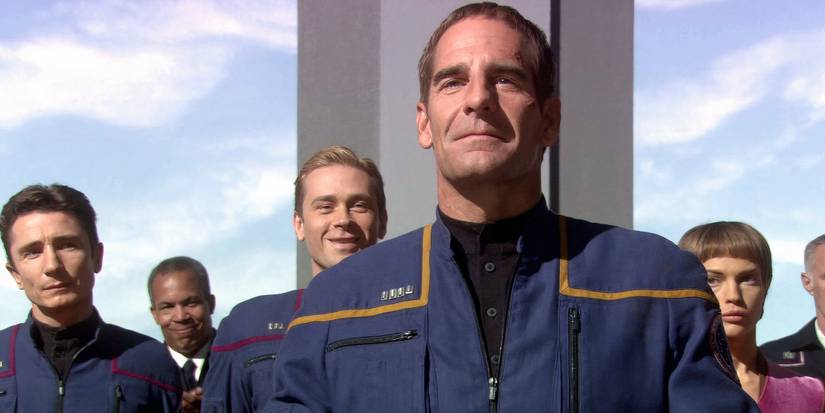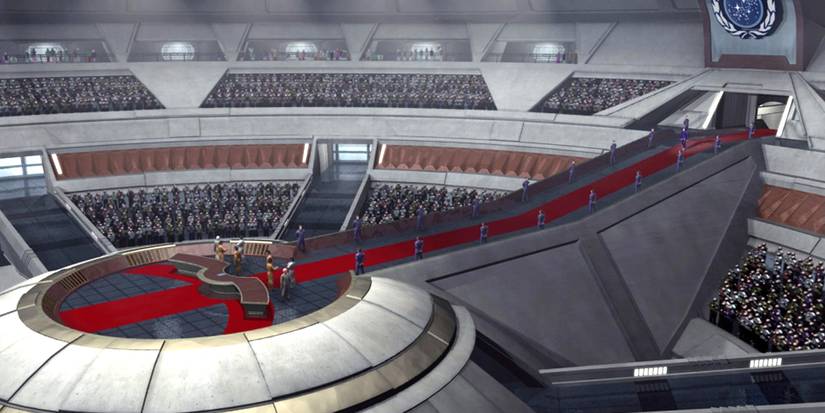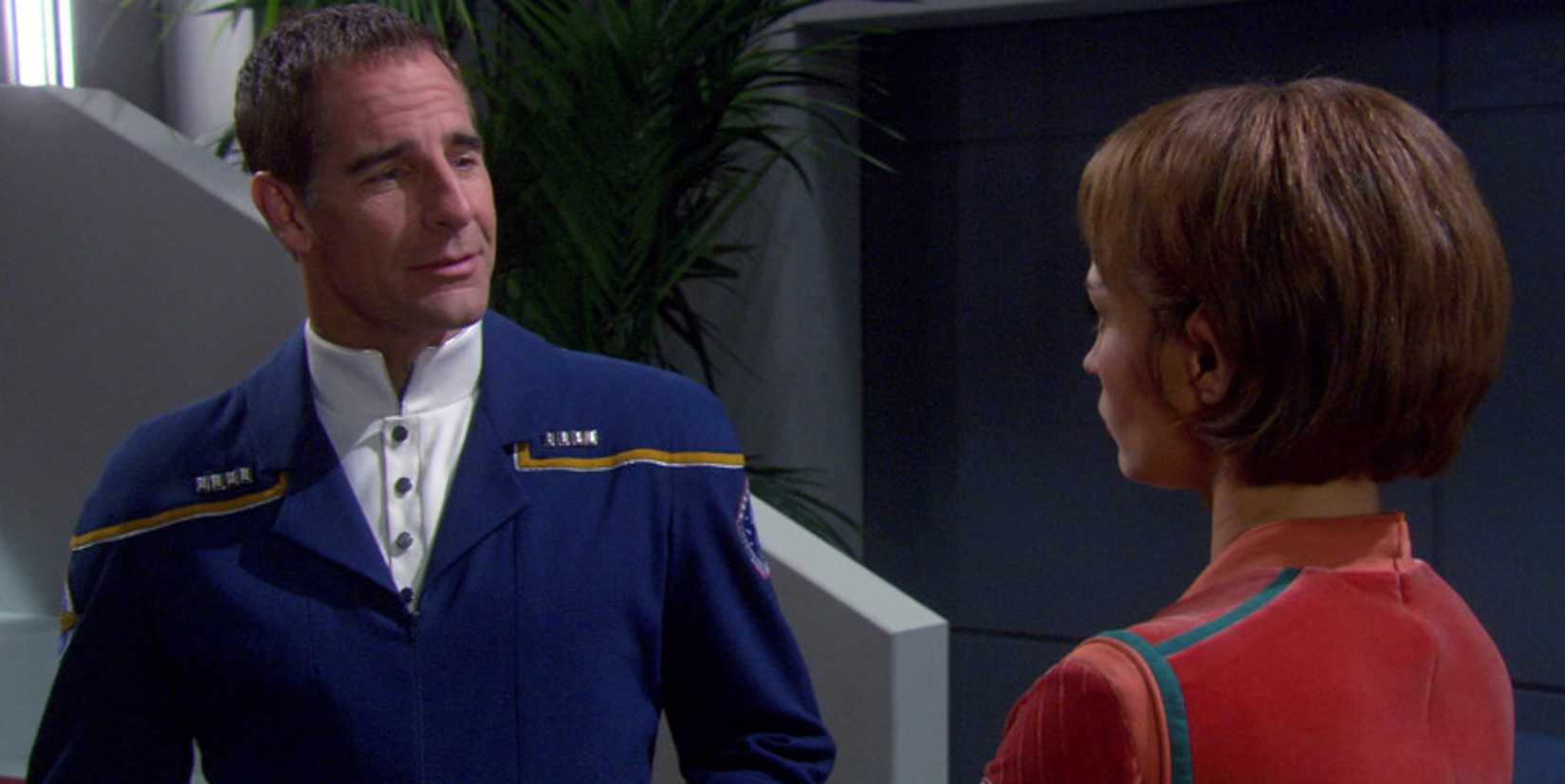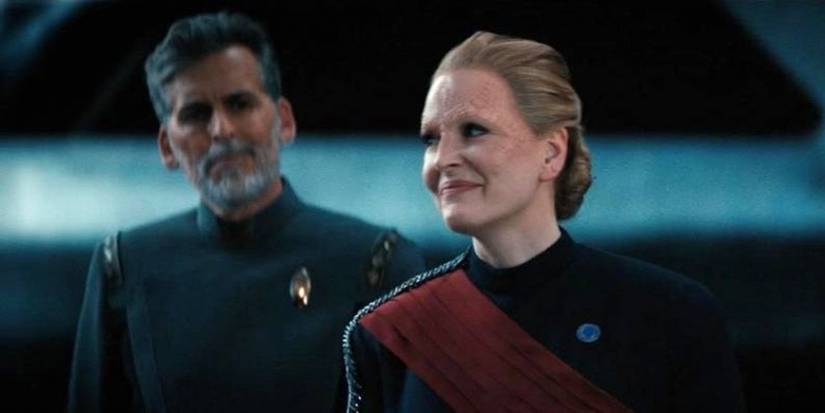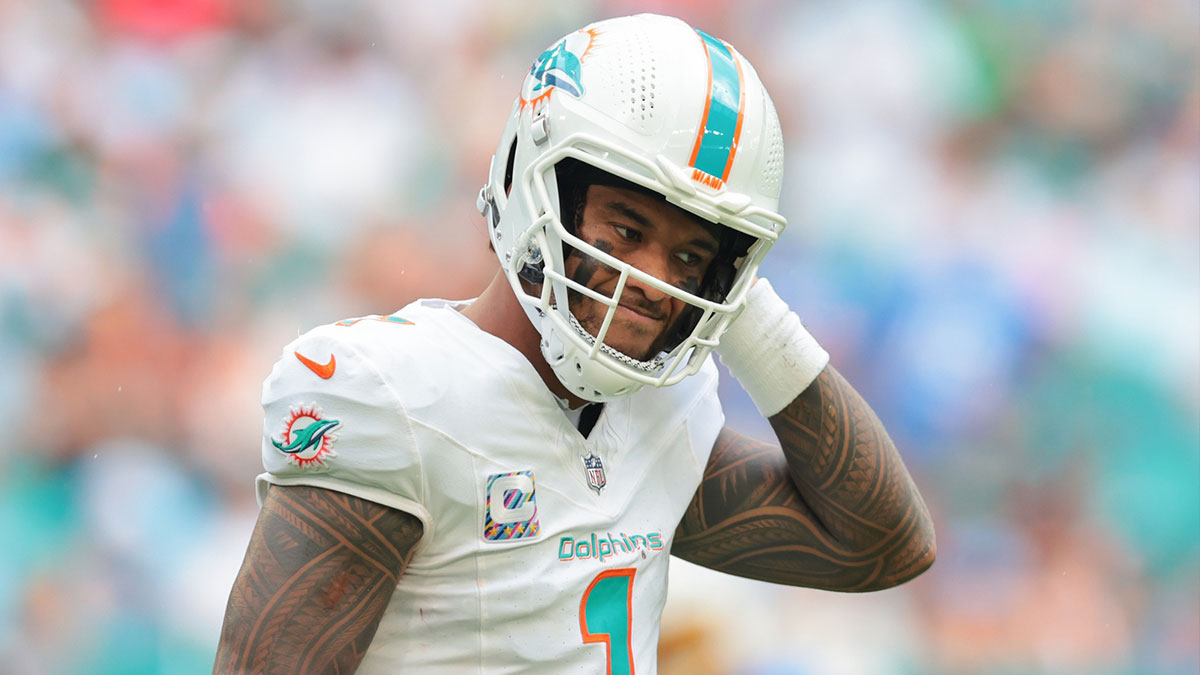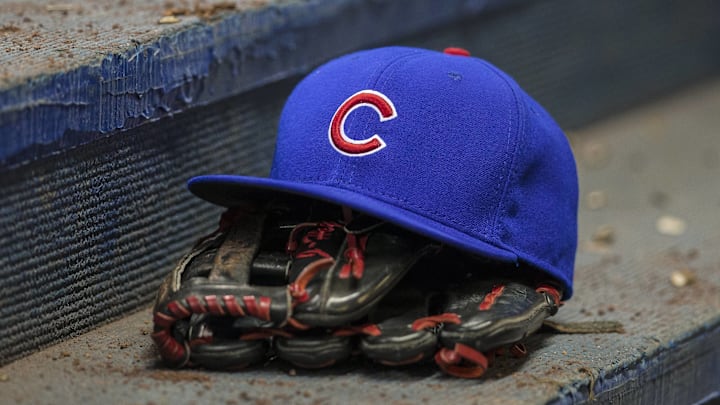Scott Bakula’s Star Trek Comeback Can Answer One Of The Biggest President Archer Questions
Scott Bakula's proposed Star Trek comeback, set decades after Star Trek: Enterprise, can answer a pivotal question about President Jonathan Archer and his place in the lineage of the United Federation of Planets' Presidents.

Star Trek: Enterprise's series finale depicted the signing of the articles that birthed the Federation in 2161, which was overseen by Captain Archer. A file card seen in Star Trek: Enterprise
101 years span the final scene of Star Trek: Enterprise and the start of
Star Trek: United Can Reveal If Archer Was The First Federation President
Not unlike how "Beam me up, Scotty!" is a popular quote associated with Star Trek, despite no one in
It's possible that President Archer was the first Federation President, and the office of the President wasn't formally established until the 2180s. It's also possible that there were other Presidents before Archer who may not have been successful or well-known before Archer took office.
A newspaper clipping created as background material for Star Trek Generations named United Earth Ambassador Thomas Vanderbilt as the first Federation President. However, it wasn't seen on screen, so it didn't become official
Star Trek: United could make Thomas Vanderbilt canon as the first Federation President. Or it could ignore that trivial minutia and create a new first President character and lineage. Or
Star Trek's Federation Wasn't Perfect From Its Creation
The United Federation of Planets didn't spring fully formed from its inception in 2161. It likely took years to secure the alliance, build trust, and expand with more member worlds. It's also possible that the early years of the Federation were precarious, with the alliance teetering on disaster.
One of the exciting aspects of Star Trek: United is that it's designed to tackle these very questions that have been kept murky by Star Trek for the last 60 years. The Federation is often described as a 'paradise,' especially in
Star Trek: United could reveal that the first decades of the Federation were rife with conflicts, fits and starts, teetered on disaster, and that the 'paradise'
Star Trek: United Story Makes Archer The Federation’s Most Important President
Star Trek has only named and shown a handful of Presidents on-screen from the thousand years the United Federation of Planets existed between
Star Trek: United would be the first story about a Federation President, and it would make Jonathan Archer the most important to hold the office, even if he has predecessors.
Michael Sussman has indicated that Star Trek: United's story is about President Archer trying to save the Federation, with the help of his children. For Archer, the Federation is a
However, Mike Sussman also wants to begin Star Trek: United by showing a glimpse of the Romulan War that was never seen in Star Trek canon, so perhaps the Romulans could emerge as villains, taking vengeance by attempting to tear down the young Federation.
By saving the Federation, Archer cements his place as its greatest President, its Abraham Lincoln.
Whatever President Archer faces in Star Trek: United, we know the Federation endures, and he wins in the end, but the questions are how, and what does it cost Jonathan? Regardless, by saving the Federation, Archer cements his place as its greatest President, its Abraham Lincoln.
Who Are Star Trek's Other Federation Presidents?
Star Trek is primarily about starships exploring strange new worlds, so there have only been a handful of times events have led back to Federation headquarters and required the appearance of the Federation President.
Kurtwood Smith played the next Federation President, an Efrosian, seen on screen in Star Trek VI: The Undiscovered Country. This President declared that he's not above the law, as a conspiracy to prevent the Federation from brokering peace with the Klingons was foiled by Captain Kirk and the USS Enterprise.
Star Trek: Deep Space Nine introduced President Jaresh-Inyo (Hershel Sparber), a Grazerite who was in office when a rogue Starfleet Admiral attempted a military coup to take over Earth, and during the Dominion War, which the Federation and its allies ultimately won.
Walter Koenig voiced Federation President Anton Chekov in Star Trek: Picard season 3's early 25th century.
Star Trek: Discovery debuted President Laira Rillak (Chelah Horsdal), of mixed human, Cardassian, and Bajoran heritage. President Rillak was elected to rebuild the United Federation of Planets after the mystery of The Burn was solved by Captain Michael Burnham (Sonequa Martin-Green) and the USS Discovery.
While some of the Federation Presidents known have been more impactful than others, Star Trek: United would place President Jonathan Archer center stage, telling a thrilling new kind of Star Trek
‘The Last of Us’ Director Breaks Down Ellie and Nora’s Confrontation

Ellie’s (Bella Ramsey) pursuit for revenge after Joel’s (Pedro Pascal) tragic death at the hands of Abby (Kaitlyn Dever) in Episode 2 is taken to a whole new level in the latest episode of “The Last of Us.”

That’s because after Ellie tracks down Nora (Tati Gabrielle), a key member of the Washington Liberation Front who was with Abby when she killed Joel — and tortures Nora for information about Abby’s whereabouts. After cornering Nora with a gun and slamming a piece of pipe into her stomach, Ellie demands: “Where is she?”
It’s a point of no return.
But Joel’s influence is felt in quieter moments throughout the episode. One particularly emotional scene comes early on when Ellie plays a guitar to an empty theater, clearly thinking back to her time with Joel. Director Stephen Williams, who is new to the world of “The Last of Us,” explains that the scene was filmed on location at The Orpheum Theater in Vancouver, and when Ramsey finished singing, everyone on set was simply left “damp eyed.”
“It was such an evocative moment — it’s so sad and filled with longing, yearning and heartbreak as Ellie experiences and relives the brutal murder of Joel in front of her very eyes. It continues to haunt her and finds this incredible expression through her music,” Williams tells Variety. “Bella stepped up, grabbed the instrument and delivered — crushed it. And we just recorded the brilliance that was unfolding in front of us.”
The episode also sees the return of familiar faces, mainly Jesse (Young Mazino), who we learn had trailed behind Ellie and Dina (Isabela Merced) the day after they left for Seattle. Below, Williams explains how Jesse’s well-timed return reminds Ellie of Joel, how he thought about weaving emotional moments between Ellie and Dina with tense action set-pieces and why his approach was to simply “stay out of the way” when directing that tense final confrontation.
The end scene where Ellie confronts Nora about Abby is so intense, with the revelation that Ellie actually knows that Joel killed everyone in the hospital in order to save her. Knowing how important this endnote would be, how did you approach filming it?
So much of how we approach the work on “The Last of Us” comes first and foremost from the richness of Craig Mazin and Neil Druckmann’s scripts and, obviously, the characters that are being developed from the game. If Season 1 was dedicated to notions of endurance and survival, Season 2 delves deeper into questions around vengeance and mercy. Executing the climatic scene of Episode 5, where Ellie confronts Nora, really hinges around Ellie’s decision to continue seeking vengeance for everything that Abby and Nora and their crew did to Joel.
Bella Ramsey, in particular, is so stoic at that moment. How did you direct Bella and Tati Gabrielle, who have already developed trust with each other before you creatively became involved with ‘The Last of Us’?
Bella is a force of nature. They are so dialed in and just so brilliantly inhabits the character that there was very little that I had to say to them. I just had to stay out of the way, really. And then Tati, who plays Nora, just did an incredible job throughout the whole episode. They both were so committed to the material and committed to the ways their characters function within everything that had been constructed around the scene. It really was just about creating a safe environment for both of them to execute.

It was a great surprise to see Jesse (Young Mazino) back in action. Since this episode is so focused on Ellie and Dina, having Jesse back really changes the dynamic and energy, so how did you approach his return?
There’s a sort of love triangle that is constantly evolving and fluid between Jesse, Ellie and Dina. When Ellie and Dina set out for Seattle in quest of seeking revenge on Abby and her crew, Jesse belatedly follows and shows up in a very fortuitously timed moment that Ellie and Dina find themselves in with some of the infected. For a moment, as Ellie is saved by Jesse’s timely arrival, it reminds her of the experience that she had on so many different occasions with Joel in Season 1.
The sequence when Jesse returns is a huge set-piece in the basement. Were there any key visual references you had when creating that?
What we start by doing is making sure it’s not just a big action set-piece. We’re anchoring the characters within the context of all the ensuing action. The trick is to never lose sight of the characters that are embroiled in the set. In this case, it’s about Ellie feeling protective of Dina, who is under great duress and Ellie feeling responsible for Dina and desperately trying to make sure they both make it out alive. Obviously, when Jesse arrives, that becomes true of his character as well.

This episode features the first time that viewers are really seeing the faction of Scars in action after their introduction back in Episode 3. How did you think about the way they move as a pack?
Part of what happens this season is that we start exploring how different factions of humanity react to the extreme circumstances they find themselves in. So the Washington Liberation Front is trying to spin around the axis of a militia, whereas the Seraphites, or the Scars, are reacting to their circumstances by dedicating to a fundamentalist faith. And in our episode, we show some of the extremes that are pursuant to each choice, to a certain interpretation of faith as a way of addressing extreme circumstances. That can sometimes lead to very graphic depictions, which I think many viewers will see in our episode.
And with that opening interrogation scene between two of the WLF leaders, you place a lot of trust in the viewer because it takes a while for us to figure out what’s even happening with the new infection. Was that a difficult choice?
The episode opens on a very mysterious note introducing a new way in which the Cordyceps contagion manages to transmit itself. That takes a while for the audience to catch up to, which they do toward the end of the episode with Nora. But at the beginning, the audience is in the same place as the characters because they have just encountered an airborne form of this mutant infection in a novel way. So I think it’s OK that viewers are temporarily disoriented, until the later revelations about where these airborne spores are being generated and the extent to which they have infested this particular facility in Seattle.
With Ellie and Dina’s dynamic, there was a huge turning point in Episode 4 when Dina tells Ellie that she loves her for the first time. How did you weave in this incredibly intimate relationship while their lives are being threatened so heavily throughout? Their relationship feels like the key to the whole season.
One of the things Craig and Neil do so well in constructing the series is generating these moments of intimacy between characters set against the backdrop of more epic set-pieces. The interplay between those elements gives the narrative an incredibly grounded sense of momentum as we experience, along with our characters, what it would feel like to be in this dire set of circumstances. Life goes on and love goes on and affection goes on and attachment goes on simultaneously with vengeance, revenge, wrath, anger. All these things are part of the complex interconnectivity of the characters.
And finally, that last flash before the credits shows a tender memory of Ellie and Joel. Why was that the right moment for this episode to end on?
Since Episode 2, everything in this season has been about payback, and this incredible stew of emotions that Ellie is experiencing. The loss and the heartbreak and the things left unsaid between her and Joel is the motivating metronome behind all the narrative beats. It felt appropriate for the episode to end in a reverie of Ellie’s recollection of Joel — especially after the intense scene that preceded it. It was the right tonal gear shift.

